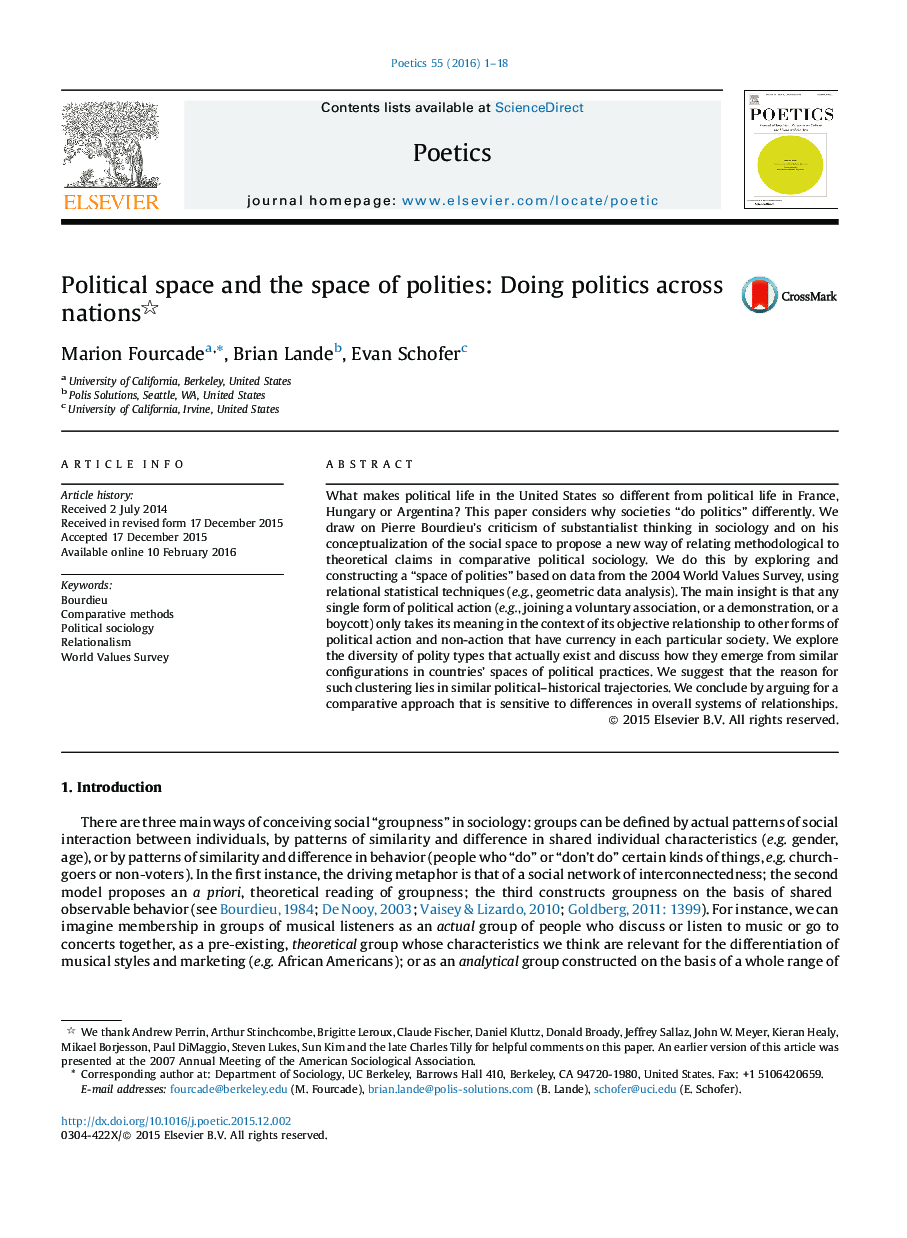| Article ID | Journal | Published Year | Pages | File Type |
|---|---|---|---|---|
| 1128278 | Poetics | 2016 | 18 Pages |
•The paper demonstrates the utility of Bourdieuian geometric data analysis for comparative research: both cross-national and intra-national patterns of political participation are characterized in multidimensional space.•Our quantitative analysis, based on the World Values Survey, confirms the relevance of the conceptualization of cross-national differences proposed by Jepperson and Meyer (1991) and Jepperson (2002).•Substantively, we show that nations can be distinguished primarily by the volume and temporality of political involvement among their members.•We show that similar relative positions in the space of countries correspond to similar historical trajectories and institutional configurations of the political field.•We further show how analysis of practices within countries can be used to unpack the varying meaning of different political actions (e.g., volunteering, protest); several key patterns are highlighted, such as the starkly different meaning of voluntary work in low versus high temporality societies.
What makes political life in the United States so different from political life in France, Hungary or Argentina? This paper considers why societies “do politics” differently. We draw on Pierre Bourdieu’s criticism of substantialist thinking in sociology and on his conceptualization of the social space to propose a new way of relating methodological to theoretical claims in comparative political sociology. We do this by exploring and constructing a “space of polities” based on data from the 2004 World Values Survey, using relational statistical techniques (e.g., geometric data analysis). The main insight is that any single form of political action (e.g., joining a voluntary association, or a demonstration, or a boycott) only takes its meaning in the context of its objective relationship to other forms of political action and non-action that have currency in each particular society. We explore the diversity of polity types that actually exist and discuss how they emerge from similar configurations in countries’ spaces of political practices. We suggest that the reason for such clustering lies in similar political–historical trajectories. We conclude by arguing for a comparative approach that is sensitive to differences in overall systems of relationships.
